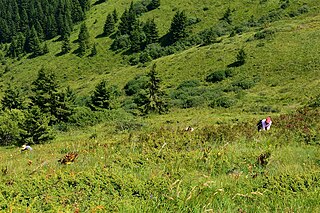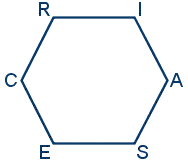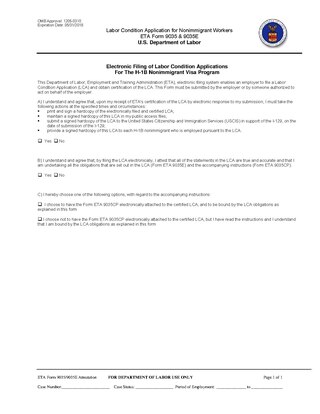Related Research Articles

The United States Department of Labor (DOL) is one of the executive departments of the U.S. federal government. It is responsible for the administration of federal laws governing occupational safety and health, wage and hour standards, unemployment benefits, reemployment services, and occasionally, economic statistics. It is headed by the secretary of labor, who reports directly to the president of the United States and is a member of the president's Cabinet.
A statistician is a person who works with theoretical or applied statistics. The profession exists in both the private and public sectors.

Temporary work or temporary employment refers to an employment situation where the working arrangement is limited to a certain period of time based on the needs of the employing organization. Temporary employees are sometimes called "contractual", "seasonal", "interim", "casual staff", "outsourcing", "freelance"; or the words may be shortened to "temps". In some instances, temporary, highly skilled professionals refer to themselves as consultants. Increasingly, executive-level positions are also filled with interim executives or fractional executives.
The Standard Occupational Classification (SOC) System is a United States government system for classifying occupations. It is used by U.S. federal government agencies collecting occupational data, enabling comparison of occupations across data sets. It is designed to cover all occupations in which work is performed for pay or profit, reflecting the current occupational structure in the United States. The 2018 SOC includes 867 detailed occupations.
The Job Training Partnership Act of 1982 was a United States federal law passed October 13, 1982, by Congress with regulations promulgated by the United States Department of Labor during the Ronald Reagan administration. The law was the successor to the previous federal job training legislation, the Comprehensive Employment and Training Act (CETA). It was repealed by the Workforce Investment Act of 1998 during the administration of President Bill Clinton.
The Workforce Investment Act of 1998 was a United States federal law that was repealed and replaced by the 2014 Workforce Innovation and Opportunity Act.

The Holland Codes or the Holland Occupational Themes (RIASEC) refers to a taxonomy of interests based on a theory of careers and vocational choice that was initially developed by American psychologist John L. Holland.
Job analysis is a family of procedures to identify the content of a job in terms of the activities it involves in addition to the attributes or requirements necessary to perform those activities. Job analysis provides information to organizations that helps them determine which employees are best fit for specific jobs.

The Employment and Training Administration (ETA) is part of the U.S. Department of Labor. Its mission is to provide training, employment, labor market information, and income maintenance services. ETA administers federal government job training and worker dislocation programs, federal grants to states for public employment service programs, and unemployment insurance benefits. These services are primarily provided through state and local workforce development systems.

A boilermaker is a tradesperson who fabricates steels, iron, or copper into boilers and other large containers intended to hold hot gas or liquid, as well as maintains and repairs boilers and boiler systems.
John Lewis Holland was an American psychologist and Professor Emeritus of Sociology at Johns Hopkins University. He was the creator of the career development model, Holland Occupational Themes, commonly known as the Holland Codes.

The Dictionary of Occupational Titles or D-O-T (DOT) refers to a publication produced by the United States Department of Labor which helped employers, government officials, and workforce development professionals to define over 13,000 different types of work, from 1938 to the late 1990s. The DOT was created by job analysts who visited thousands of US worksites to observe and record the various types of work, and what was involved. Innovative at the time, the DOT included information still used today in settling EEO and Workers Comp claims, like the physical abilities required to perform that occupation, and the time and repetitiveness of those physical actions.

The Selected Characteristics of Occupations (SCO) is a companion volume to the U.S. Department of Labor's Dictionary of Occupational Titles, Revised Fourth Edition, published in 1991. These volumes were intended to provide a detailed representation of thousands of individual occupations in the United States, for the purpose of occupational information, occupational exploration, and job placement.
Transferable skills analysis is a set of tests or logic to determine what positions a person may fill if their previous position(s) no longer exists in the local job market, or they can no longer perform their last position(s). An informal transferable skills analysis can be performed with the help of a career counselor, career portfolio or a career planning article or book. Transferable skills are determined by analyzing past accomplishments or experience. For instance, a stay-at-home parent and homemaker might find they have skills in budgeting, child development, food services, property management, and so on.
Right to know is a human right enshrined in law in several countries. UNESCO defines it as the right for people to "participate in an informed way in decisions that affect them, while also holding governments and others accountable". It pursues universal access to information as essential foundation of inclusive knowledge societies. It is often defined in the context of the right for people to know about their potential exposure to environmental conditions or substances that may cause illness or injury, but it can also refer more generally to freedom of information or informed consent.

A farmworker, farmhand or agricultural worker is someone employed for labor in agriculture. In labor law, the term "farmworker" is sometimes used more narrowly, applying only to a hired worker involved in agricultural production, including harvesting, but not to a worker in other on-farm jobs, such as picking fruit.
The Senior Community Service Employment Program (SCSEP) is a program of the United States Department of Labor, its Employment and Training Administration, to help more senior citizens get back into or remain active in the labor workforce. It is a community service and work-based training program. It does this through job skill training and employment assistance with an emphasis on getting a ready job with a suitable and cooperating company or organisation. In such a setting, the worker is paid the United States minimum wage, or the highest of Federal, State or local minimum wage, or the prevailing wage, for an average of 20 hours per week, and experiences on-the-job learning and newly acquired skills use. The intention is that through these community jobs, the older worker will gain a permanent job, not subsidized by federal government funds.

Workforce Innovation in Regional Economic Development (WIRED) was a project of the United States Department of Labor. It provided a new approach to workforce and economic development. Through the WIRED model, regions integrated economic and workforce development activities to demonstrate that talent development can drive economic transformation in regional economies across the United States.

The Workforce Innovation and Opportunity Act (WIOA) is a United States public law that replaced the previous Workforce Investment Act of 1998 (WIA) as the primary federal workforce development legislation to bring about increased coordination among federal workforce development and related programs.

The Labor Condition Application (LCA) is an application filed by prospective employers on behalf of workers applying for work authorization for the non-immigrant statuses H-1B, H-1B1 and E-3. The application is submitted to and needs to be approved by the United States Department of Labor Employment and Training Administration (DOLETA)'s Office of Foreign Labor Certification (OFLC). The form used to submit the application is ETA Form 9035.
References
- ↑ About O*NET
- 1 2 3 4 Replace with a database: O*NET replaces the Dictionary of Occupational Titles
- ↑ O*NET OnLine: Interests
- 1 2 O*NET - beyond information - intelligence
- ↑ Harvey, Robert J. "Deriving Synthetic Validity Models: Is R=.80 Large Enough?" (PDF). Virginia Tech. Archived from the original (PDF) on 28 August 2013. Retrieved 6 November 2018.
- ↑ "US Department of Labor/O*NET Center" (PDF).
- ↑ Matthew Mariani. "O*NET Update" (PDF). www.bls.gov.
- ↑ Schultz & Schultz, Duane (2010). Psychology and work today. New York: Prentice Hall. p. 61. ISBN 978-0-205-68358-1.